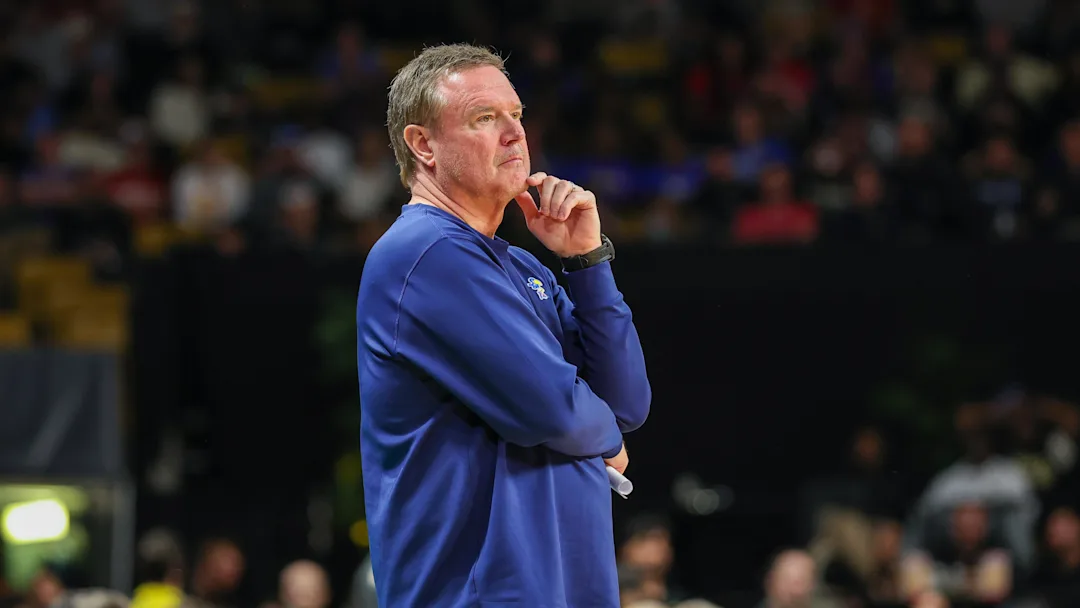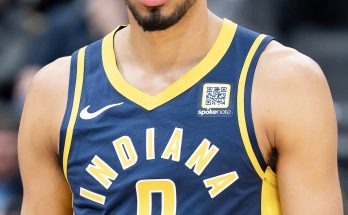If Dame Sarr commits to Duke, Kansas basketball will need to recalibrate its recruiting strategy and target new prospects with the potential to fill the significant void left by the loss of such a high-profile talent. Dame Sarr, a towering and versatile big man, represents a coveted piece for any college basketball program. His skill set, size, and potential NBA upside make him a transformational player, and his commitment to Duke would underscore the Blue Devils’ ongoing dominance in recruiting top-tier prospects. For Kansas, a storied program with its own rich tradition, missing out on Sarr would not be the end of the world but certainly a pivotal moment to pivot aggressively toward alternative targets. The Jayhawks will need to explore a mix of elite high school prospects, underrated gems, and potentially transfer market options to keep their roster competitive at the highest level.
To understand the significance of Sarr’s potential commitment to Duke, it’s important to recognize what kind of player he is and why he’s so sought after. Dame Sarr stands around 7 feet tall, with a wingspan that allows him to be a formidable rim protector and rebounder. But what makes him truly special is his mobility, shooting touch, and ability to handle the ball for a player of his size. This combination of traditional big man skills and modern perimeter ability is highly coveted in college basketball, especially in an era that favors pace, space, and versatile big men who can defend multiple positions. Sarr’s skill set aligns perfectly with Duke’s system under Coach Jon Scheyer, who emphasizes pace and space offense with a strong emphasis on individual development and NBA preparation.
For Kansas, losing out on a player like Sarr means missing a unique blend of rim protection and offensive versatility that would be a cornerstone for their team’s identity. Bill Self’s Jayhawks have long thrived on strong frontcourt players who can dominate the paint on both ends of the floor while helping run the floor in transition. Sarr fits that mold. But Kansas also has a rich history of adapting and finding new paths to success. So, if Sarr commits to Duke, the Jayhawks should move quickly to identify players who can help fill the void and continue Kansas’ pursuit of Big 12 and national championships.
First, Kansas should focus on other elite big men in the 2025 recruiting class who offer similar upside. There are usually several 6’10” or taller prospects every year who bring a blend of shot-blocking, rebounding, and offensive skills that fit the mold Kansas looks for. While none may have the exact combination of mobility and shooting that Sarr possesses, some come close and can be developed into NBA-caliber players in a strong program like Kansas. Coaches will need to evaluate not just raw talent but also character, work ethic, and fit within the system. Targets with strong footwork, solid shooting touch, and the ability to defend pick-and-roll scenarios will be high on the list.
Among the prospects Kansas could consider are players like [Hypothetical Prospect A], a 7-footer with an advanced post game and a developing three-point shot, and [Hypothetical Prospect B], a more athletic but raw big man with elite shot-blocking instincts. The Jayhawks’ staff will likely spend significant time on the road or in contact with these prospects’ coaches to make their pitch. Kansas can also emphasize its tradition of sending big men to the NBA, highlighting recent success stories who blossomed in Lawrence.
In addition to looking for another high-profile big man, Kansas should consider expanding its recruiting scope to include elite wing players who can bring versatility and scoring punch. While Sarr would have anchored the interior, basketball has evolved to reward wings who can do it all—score inside and out, defend multiple positions, and handle the ball effectively. Kansas can look at top-rated wings in the country who might not be centers or power forwards but bring elite talent and versatility that can help balance the team. With the right mix of guards, wings, and forwards, Kansas can craft a balanced roster even without a dominant big man like Sarr.
Another avenue Kansas should aggressively explore is the transfer portal. The portal has dramatically changed college basketball recruiting in recent years, allowing programs to add experienced players who can contribute immediately. Kansas has traditionally done well in the transfer market, often landing veteran players who fit the culture and system perfectly. If Sarr commits elsewhere, Kansas should target high-impact transfers who can bring size and skill to the frontcourt immediately. Many transfers come from other Power Five programs or successful mid-major teams, so this pool offers a rich variety of options.
A veteran transfer big man or even a versatile forward could fill gaps that a freshman might take a year or two to fill. Transfers can also bring leadership and experience that helps teams contend for championships right away. For Kansas, the ability to mix youth with experience will be key, especially in a season where expectations are always high.
Furthermore, Kansas should not underestimate the importance of developing lesser-known or underrated prospects. Every season, players emerge who fly under the radar but blossom in top programs thanks to excellent coaching and player development. Bill Self and his staff have a reputation for developing talent, especially in the frontcourt. With Sarr going to Duke, Kansas can look for players who may have been overlooked due to physical limitations, lack of exposure, or late development. These players often come from less traditional basketball hotbeds or smaller programs but have the potential to grow into high-level contributors.
Kansas’ history shows that finding diamonds in the rough is possible, and the staff can highlight this opportunity to prospects who want to come in with a chip on their shoulder. It is a recruiting pitch grounded in growth, development, and the chance to be part of something special.
Moreover, Kansas should also double down on recruiting versatile big men who are skilled in the modern style of basketball. The game is trending toward positionless basketball where bigs can shoot threes, defend the perimeter, and switch on screens. Kansas could look for players who might not be traditional centers but who have the length, athleticism, and shooting ability to stretch the floor. These types of players fit perfectly in Bill Self’s evolving schemes, which increasingly utilize floor spacing and ball movement.
In that vein, Kansas could also target international prospects. The global talent pool continues to grow, and many international big men come with high skill levels and polished fundamentals. The Jayhawks’ staff could focus on European or African prospects with professional experience in youth leagues who can contribute immediately or develop quickly. Targeting international prospects also helps diversify the team’s playing style and culture, which has been successful for Kansas in the past.
Recruiting is always a delicate balance of targeting the right players and building relationships early. The loss of Dame Sarr to Duke, while disappointing, is not catastrophic for Kansas but is a clear signal to ramp up efforts elsewhere. The Jayhawks have the advantage of a strong brand, a winning tradition, and a passionate fan base. These factors, combined with a talented coaching staff, give Kansas a legitimate shot at landing alternative elite players who can continue to push the program forward.
Finally, Kansas should never lose sight of the intangible qualities that great recruits bring. Dame Sarr may be physically gifted and talented, but recruiting is also about finding players with a high basketball IQ, strong leadership qualities, and a desire to win at the highest level. Kansas has long been able to identify players who are coachable, team-oriented, and resilient—qualities that translate to on-court success and team cohesion.
If Dame Sarr commits to Duke, Kansas basketball will face a moment of adjustment but also opportunity. The Jayhawks must target other elite big men in the recruiting class, widen their scope to versatile wings, capitalize on the transfer portal, explore international prospects, and lean into their player development strengths. The program’s ability to adapt, recruit intelligently, and develop talent will determine its continued success. Kansas remains one of college basketball’s premier programs, and while missing out on a transformative player like Sarr is a setback, the Jayhawks have all the resources and pedigree to rebound quickly and continue competing for championships at the highest level. The recruiting chessboard is always shifting, and Kansas will make its next strategic move with purpose and ambition.



